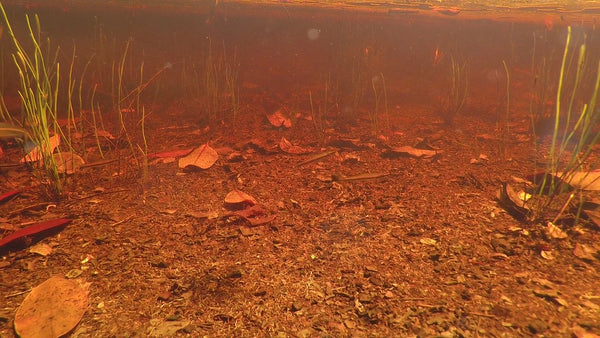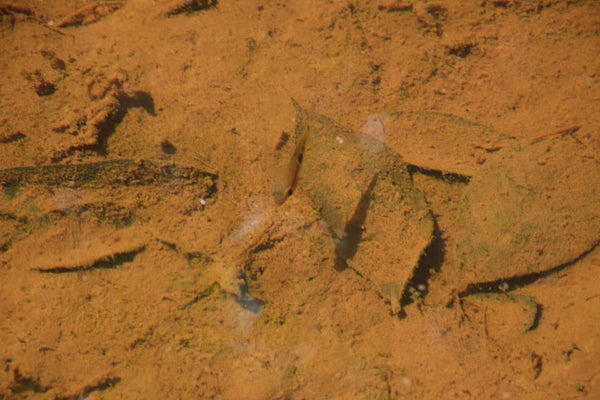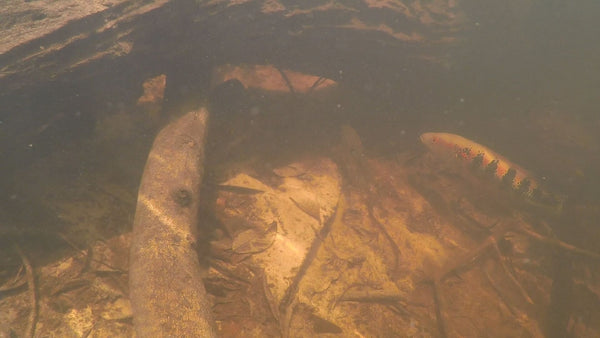- Continue Shopping
- Your Cart is Empty
The real "live stream..."
Ever thought of this: What is your aquarium "idea" based upon/inspired by? A big body of water? Some sort of meandering, flowing habitat, or just a more "static" body of water?
When you think about it, we tend to "model" our aquariums off of only a few types of aquatic features found in Nature...I'm willing to bet that they're typically lakes, rivers, and streams.
We as a group should give a bit more mental energy to thinking about these habitats...there's more there than meets the eye!
It's only been recently that I really gave more than a passing thought to what goes on "down there" in Nature, especially in streams. It's a lot more interesting, when you examine the subject more closely- especially from the perspective of how these structures came to be, and what implications they have for fish populations...cool stuff like that!

Now, sure, you know of my obsession with varying substrate compositions and enhancement of the substrate...You've likely seen my recent work with with different materials, like leaves, botanicals, clays, and sediments that I've shared with you here and elsewhere. It's an idea that I just can't get away from!

The physical composition of the substrate materials is but one fascinating aspect of these diverse aquatic systems. There is a lot more going on "down there" than meets the eye. When you take into account just how these habitats came into existence, and what processes create and sustain them, the dynamic gets really interesting!
Stream and river bottom composition is affected by things like regional weather, current, geology, the surrounding terrestrial ecosystem, and a host of other factors- all of which could make planning your next aquarium even more interesting if you take them into consideration!

And there is the whole dynamic of water movement. Like, what role does the flow of water determine the ecology of a given stream, and how it will "recruit" life forms to reside in it?
Well, for one thing, it's helpful to go back the substrate again, and to consider it's relationship to water movement. It's important to note that the volume of water entering the stream, and the depth of the channels it carves out, helps in part determine the amount and size of sediment particles that can be carried along, and thus comprise the substrate.

And of course, the composition of bottom materials and the depth of the channel are always changing in response to the flow in a given stream, affecting the composition and ecology in many ways.
For example, some leaf litter beds form in what stream ecologists call "meanders", which are stream structures that form when moving water in a stream erodes the outer banks and widens its "valley", and the inner part of the river has less energy and deposits silt- or in our instance, leaves.

Materials which fall from the surrounding trees and other vegetation accumulate in these "meanders", creating interesting ecological features which are compelling themes for your next biotope aquarium!
There is a whole, fascinating science to river and stream structure, and with so many implications for understanding how these structures and mechanisms affect fish population, occurrence, behavior, and ecology, it's well worth studying for aquarium interpretation! Did you get that part where I mentioned that the lower-energy parts of the water courses tend to accumulate leaves and sediments and stuff?
Likely you did!

I mean, that's the really fascinating part, to me.
Permanent streams will often have different volume and material composition (usually finely-packed sands and gravels, with lots of smooth stones) than more intermittent streams, which are the result of inundation caused by rain, etc.

So-called "ephemeral" streams, typically occur only immediately after rain events (which means they usually don't have fish in them unless they are washed into them from more permanent watercourses). The latter two stream types are typically more affected by leaves, botanical debris, branches, and other materials.

In the Amazon region (you knew I was sort of headed back that way, right?), it sort of works both ways, with the streams influencing the surrounding land...and then the land "giving" some of the materials back to the streams...the extensive lowland areas bordering the river and its tributaries, known as varzeas (“floodplains”), are subject to annual flooding, which helps foster enrichment of the aquatic environment.
You might even say that rivers and streams act like Nature's "sediment sorting machines", as they move debris, geologic materials, and botanicals along their courses. And along the way, varying ecological communities are assembled, with all sorts of different fishes being attracted to different niches.

Although many streams derive their food base from leaves and organic matter, there is a lot of other material present that contributes to its structure. Think along those lines when scheming your next aquarium!
It is known by science that the leaf litter and the community of aquatic animals that it hosts is, according to one study, "... of great importance in assimilating energy from forest primary production into the blackwater aquatic system."
It also functions as a means to preserve the nutrients that would be lost to the forests which would inevitably occur if all the material which fell into the streams was simply washed downstream. The fishes, crustaceans, and insects that live in the leaf litter and feed on the fungi, detritus, and decomposing leaves themselves are very important to the overall habitat.

As we've talked about before briefly, another interesting thing about leaf litter beds is that they actually have "structure" and even longevity. In several studies I read on the subject, the accumulations of leaves in various streams are documented to have existed in the same locations for years- to the point where scientists actually have studied the same ones for extended periods of time.

Of course, I think we need to look beyond just the cool looks of the natural habitats from where our fishes hail, and focus on the attributes which comprise their function. We need to understand why fishes are attracted to certain habitats, and apply these lessons into our aquariums.

The streams of the world are just a starting point for us to explore in our quest to create more realistic, functionally aesthetic aquairums that will provide enjoyment, education, and inspiration for others.
Who's down with the idea of focusing on this habitat?
Stay inspired. Stay excited. Stay creative. Stay resourceful...
And Stay Wet.
Scott Fellman
Tannin Aquatics






Scott Fellman
Author